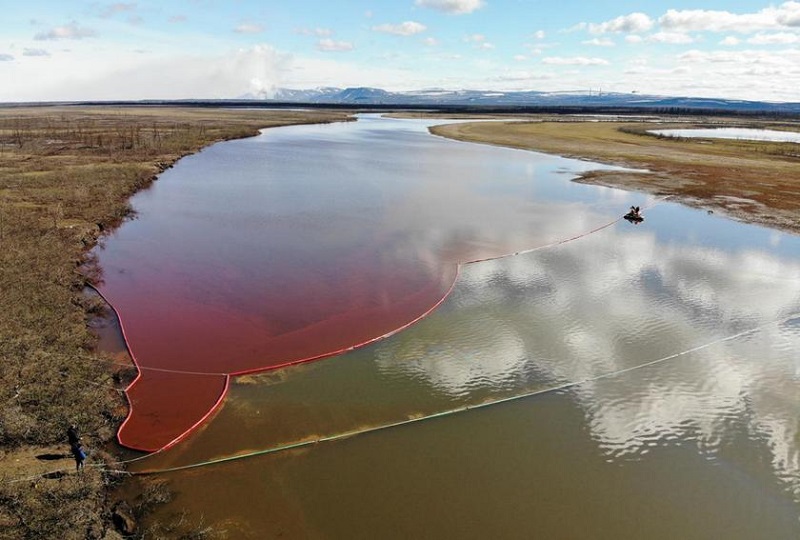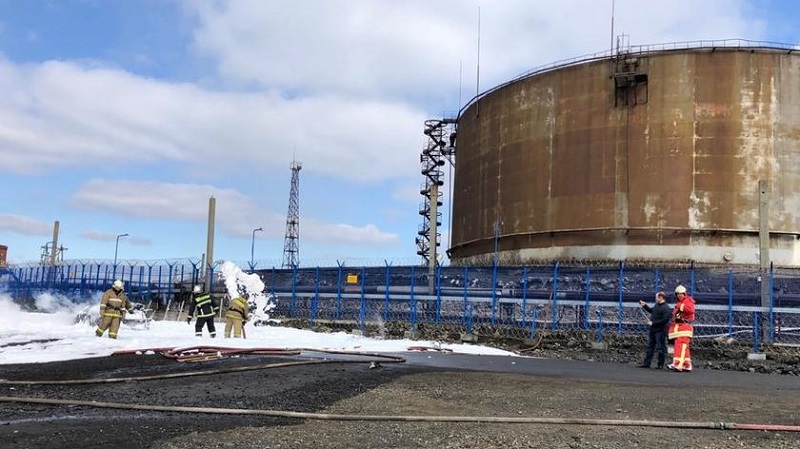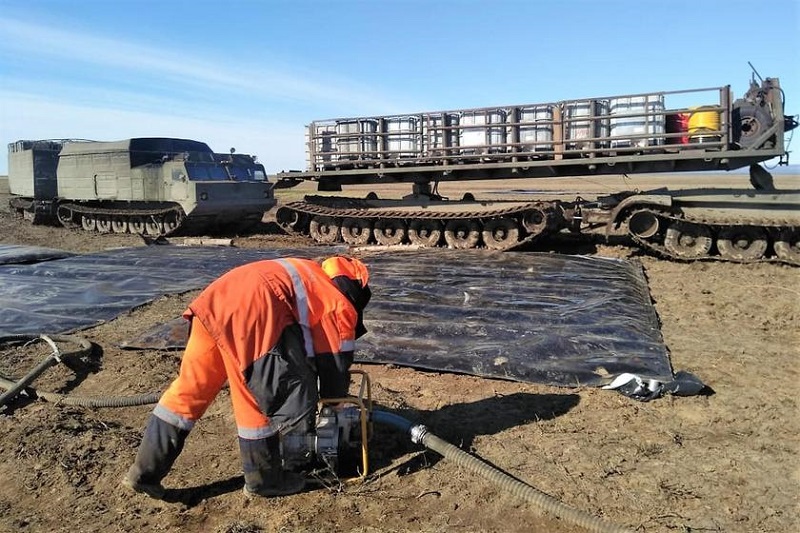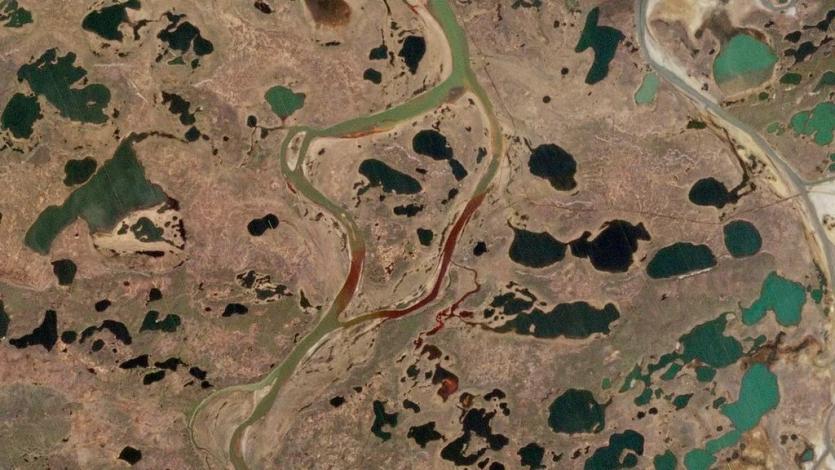The spill has polluted large stretches of Arctic rivers- colouring tundra waterways bright red- and was caused by melting permafrost, according to Russian officials
"Soil has absorbed everything like a sponge," Difficult fight with a giant leak
The World Daily | News Desk | JUNE 9th 2020
The dams set up on Siberian rivers, where the fuel from the unsealed tank leaked, proved to be ineffective. Pollution got to Lake Piasino. Soon it could also reach the Karski Sea.
Julia Gumeniuk, deputy minister of ecology in the regional government of the Krasnoyarsk region in Siberia, where an ecological catastrophe on an unprecedented scale took place, announced on Monday that “behind the dams on rivers there is a high concentration of dissolved petroleum products.” She estimated that the floating dams were ineffective. The deputy minister of ecology also suggested that the dams may have been set up “too late”.

Environmental disaster in Siberia. Photo:MARINE RESCUE SERVICE OF RUSSIA/AFP/EastNews
Gumeniuk said that some of the samples were taken at the estuary of the Ambarnaja River, which flows into Lake Piasino. The oil stain reached the “extreme point”. The concentration in the Bezymiannyj stream has been exceeded more than a thousand times. “This suggests that the soil has actually absorbed everything like a sponge,” the deputy minister regretted, quoted by Interfax.
The presence of petroleum products was also found in Lake Piasino – according to the governor of Krasnoyarsk Krai, Alexander Uss. He emphasized that at present fuel should not be allowed to enter the Piasina River, which flows into the Karski Sea.
“Piasino is a wonderful lake about 70 km long. However, it cannot be predicted how it will withstand the load after the ingress of pollution,” said Uss, quoted by the RBK portal.

Tank from which diesel fuel leaked. Photo:mchs.gov.ru
Earlier, Russian environmentalists had warned that diesel fuel that went to rivers after a spill from a tank belonging to a local CHP plant is more toxic than oil and that it cannot be completely removed.
In an interview with journalists, Deputy Minister of Emergency Affairs Alexander Chuprian said that “catching fuel from rivers is hampered by a strong wind, which causes oil stains to constantly move.”

Removing the effects of an ecological disaster in the Krasnoyarsk district. Photo:mintrans.ru
On May 29, as a result of unsealing the bottom of the tank belonging to the Norilski Nickel group, 21 thousand tons of diesel oil leaked. The reservoir was located in the CHP power plant. Reserve fuel was stored in it. Company representatives explained that the melting of permafrost, caused by climate change, could have undermined the foundations of the reservoir.
Governor of the Krasnoyarsk region Alexander Uss informed the authorities in Moscow about the disaster on May 31. Rescuers arrived on the night of May 31 to June 1. Two days later, Russian President Vladimir Putin introduced a state of emergency in the Krasnoyarsk region.
The causes of the disaster will be investigated. The Russian media reported that four criminal proceedings were initiated in connection with the leak, and the head of the Norilsk CHP plant was also detained.
The daily newspaper Kommersant estimated that “the leak could be the largest in history contamination in the Russian Arctic.”
According to the Greenpeace organization, the effects of the disaster will be felt for many years, and may affect the health of the inhabitants of the nearly three-million Krasnoyarsk Krai district. Greenpeace compared the leak to the crash of the American Exxon Valdez oil tanker in 1989, in Alaska.
© The World Daily 2020 | News Desk
Related: Oil spill in Arctic Circle was flagged as a potential threat years before recent leak






